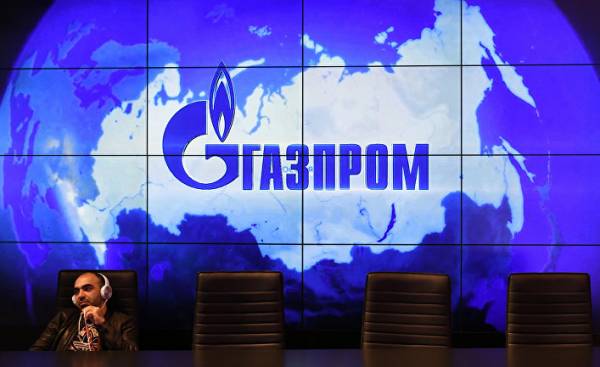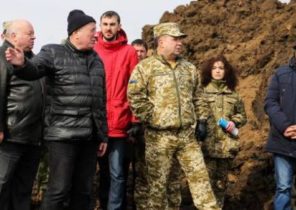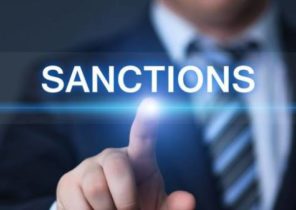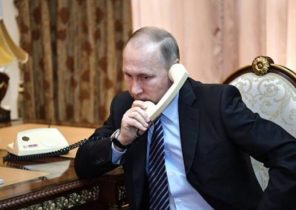
When, during his speech in Poland, President of the United States Donald trump has promised to increase the export of American natural gas to Europe, the crowd took his words to cheer.
This reaction definitely would have bothered the leadership of Gazprom, the Russian state energy giant, as it marks the intensification of the struggle for such a appreciate the European gas market.
This struggle grew for many years with increasing exports of American liquefied natural gas, undertaken with the aim to compete with Russia and to press the Russian giant with his established and traditional supplies.
This is the market that Gazprom, the main supplier of gas to Europe and have the exclusive right to export pipeline gas from Russia, said his patrimony.
Gazprom, at first glance, holds a strong position in the competition. It has the advantage of games “on its territory”, he has huge reserves, and the production cost is low. Besides, it supplies gas via pipelines, which is much cheaper than to freeze the gas, load it into a tanker of LNG and then transfer it back to a gaseous state after delivery at the destination.
But the emergence of the American gas in Europe is more open political competition.
On Wednesday, trump signed a new us law on sanctions against Russia imposed in response to its alleged meddling in the U.S. presidential election. This law can directly jeopardize export pipelines, which fears Washington will contribute to the strengthening of Moscow’s influence through the supply of gas to Europe.
Jason Bordoff (Jason Bordoff), which in the past was an adviser to former US President Barack Obama, and now directs the Center on global energy policy at Columbia University, argues that although the price of LNG, as a rule, above, Gazprom still faces a very difficult choice when competitors will make their way with their supply to the European market.
Russian companies will have to choose — either “lead price competition and defend your market share or to reduce supply to keep prices high,” he says. If Gazprom decides to choose first (as Mr. Burgundy believes that everything points to it), then Russian companies will have to admit that it comes in a price war which could adversely affect its revenues, even if she will be able to maintain sales growth in the region immediate need for energy.
Flirting U.S. President with such countries as Poland, conforms to the sentiments of Pro-NATO politicians in Central Europe, which outraged Moscow’s actions, manipulating the supply of gas to these countries through its export pipelines.
It is possible that some pleasure would give preference to gas supplies from the US, even if this means that the gas will be more expensive.
The struggle for market tougher still because of the sanctions, especially if they will hit Gazprom’s gas pipeline “Nord stream — 2”, which is intended for export to Germany and is under construction. It’s baffling Russian politicians, which are struggling to tout the possibilities of Russia as a supplier of cheap gas to Europe.
“Attempts to disrupt the implementation of the “Nord stream-2″ is one of the manifestations of unfair competition on the part of potential suppliers of liquefied natural gas, which is more expensive compared to natural gas supplied through pipelines,” — said in an interview with The Financial Times, the Russian energy Minister Alexander Novak before trump has signed the law on sanctions.
“These politically motivated economic constraints will eventually lead to higher prices of energy resources on the market.”
Statement of Mr. Novak to testify about the risks facing some European countries. Analysts say that the EU will have to increase gas imports — at least in the short term. It is connected with reduction of own gas production in countries such as the Netherlands and the UK.
The gas pipeline “Nord stream — 2” is one of the projects implemented by Gazprom in connection with the projected jump in demand. He signed an agreement with the largest European energy companies, including — Dutch Royal Dutch Shell, Austria’s OMV, French and German ENGIE Uniper and Wintershall. Under the agreement, these companies will take over the financing of the construction of the gas pipeline in the amount of 50% of the total value of 9.5 billion euros. Thanks to the “Nord stream — 2” the annual volume of gas supplies to Europe under the Baltic sea will increase by 55 billion cubic meters.
Last month, Gazprom also began work to increase the capacity under construction gas pipeline “Turkish stream” twice. This will allow to increase supplies to Turkey and the countries of southern Europe to 30 billion cubic meters per year.
For the first half of 2017, Gazprom has increased exports to Europe by 12.3% per year, despite the fact that in 2016 the annual volume of deliveries increased by 12.5%.
According to the head of Gazprom Alexey Miller, in regard to demand, his company — out of competition.
“Our gas is in Europe, rising demand, he says. And increased demand for our gas will continue.”
As the leadership of Gazprom, if countries such as Poland, decide to reduce purchases of “politically unacceptable,” Russian pipeline gas, they will have to pay more for shipping LNG to the us.
Nevertheless, the growing demand for liquefied natural gas to the unification of the markets. To increase production in the United States and in such countries-manufacturers as Australia and Qatar, allows you to combine regional markets, which previously existed by themselves. And it allows to increase volumes of gas supplies to those countries where it is needed most. It is expected that in the period from 2015 to 2020 the volume of supply of supercooled fuel will increase by almost 50%.
It already gives its effect — low us prices that fell by the extraction of shale gas have affected the level of world prices. In some countries of Europe and Asia they fell.
Gazprom management believes that the company still has a price advantage, especially after the company began to loosen control over prices in the supply of many of its main European consumers.
Currently, the price of us gas is around $ 2.85 per million BTU, units of heat energy contained in the fuel. According to Gazprom’s estimates, with all the overhead costs of shipping, liquefaction and conversion back to natural gas, this price increases to the level of more than $ 6
This compares with a price of about $ 5 per million BTU, existing in large parts of the European market, where the share of Gazprom accounts for about one third of total supplies.
Gazprom, which traditionally tied prices to oil prices, started to increase the proportion of deliveries in which he focuses on prices set in the European gas hubs. According to buyers, it’s more to the situation on the market.
“Price is something very interesting, — said a top Manager of a European energy company.
“Of course, the price at Henry Hub (a gas distribution center in Louisiana, USA — approx. lane) is now about three dollars. But then this gas must be liquefied, then forward, and then another to convert back to gas. Even taking into account only the marginal cost is not much less than the price in Europe.”
But despite these cost benefits, countries such as Lithuania and Poland, welcome supplies of LNG, wanting to show Russia that they have a choice. They complain that Gazprom’s prices are still too high and they don’t like to depend on Russia.
Some European countries would like to get rid of the dominance of Russia in the gas market. “LNG is the leverage,” says Ira Joseph (Joseph Ira) of consultancy Pira, unit information companies in the S&P Global Platts, working in the energy sector.
The head of the energy group’s Tellurian Sharif Bitches (Charif Souki) noted that it should not be assumed liquefied natural gas a replacement for pipeline gas, because by itself it is not able to meet the needs of the European market.
But, in his opinion, LNG provides flexibility of the gas market, provides a choice. “Gas can now be supplied anywhere in the world, where there is a demand. And therein lies the biggest problem for such companies as “Gazprom””.
For more choices and increase market competition can contribute to lower prices for European consumers.
In the end, this could become a battle between the US and Russia, the winners of which will be European customers from utility services in Germany, to energy-intensive industries in the UK.







